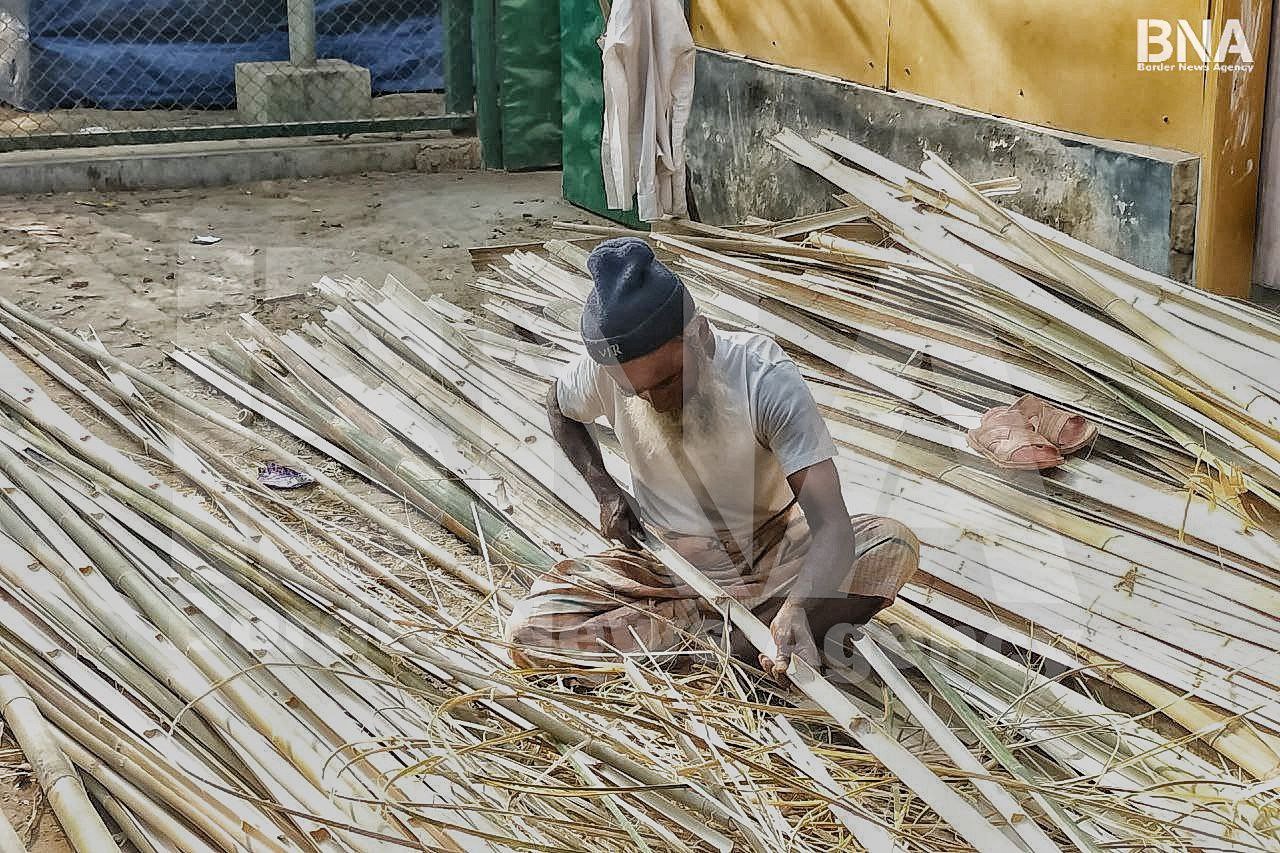Cox’s Bazar, Bangladesh — Rohingya refugees in Bangladesh’s overcrowded camps are struggling to rebuild their fragile shelters as seasonal storms continue to cause destruction. Every year, humanitarian organizations distribute bamboo, tarpaulin, and ropes to help refugees repair their homes, but these materials are provided in limited quantities, far from enough to fully rebuild shelters that are already weak and deteriorating.
Recent strong winds have once again exposed the vulnerability of these makeshift homes. According to local reports, more than 200 shelters in Camp 4 and Camp 17 were severely damaged last week, leaving many families homeless. The affected refugees were forced to seek temporary refuge with neighbors or in overcrowded community spaces.
“Our shelter was already weak, and when the wind came, it just collapsed,” said Noor Hussain, a refugee who has been living in the camp since 2017. “Now, my family is sleeping on the muddy ground because we have no extra bamboo or tarpaulin to rebuild.”
Since 2017, nearly one million Rohingya refugees have been living in makeshift shelters made from bamboo and tarpaulin after fleeing a brutal military crackdown in Myanmar’s Rakhine State. The United Nations has described the persecution of the Rohingya as a genocide, yet six years later, the refugees continue to face harsh conditions in the camps, with no clear future.
The shelters they live in are not strong enough to withstand seasonal rains and strong winds. Many are built on hilly terrain, increasing the risk of landslides during monsoon season. With aid funding decreasing over time, the materials available for repairs are becoming even more scarce.
“We have no proper walls, no doors, and when the wind comes, we don’t know if our shelter will stand or fall,” said Hamida Begum, a mother of three living in Balukhali camp.
“When it rains, the water leaks inside, and our children get sick.”
The recent reduction in food aid has made the situation even worse. With the World Food Programme (WFP) cutting monthly food rations from $12 to $10 per person last year, many families struggled to buy essentials. However, with recent adjustments, the food ration has increased to $12 per person, which has slightly eased the pressure on families. Even so, refugees say it is still not enough to cover their daily needs, forcing many to seek alternative ways to earn money.
Medical facilities inside the camps are also struggling due to a lack of resources. Many refugees report difficulty in accessing treatment for common illnesses, which are worsened by poor living conditions.
“The shelters are hot in the summer, freezing in the winter, and flood easily during the rainy season. The lack of proper shelter affects our health, but when we go to the clinic, there are not enough medicines,” said refugee Mohammad Ilyas.
As monsoon season approaches, concerns are growing about further destruction in the camps. Rohingya leaders and humanitarian organizations are urging the international community to increase support for stronger shelter materials and other essential aid.
Despite these hardships, Rohingya refugees continue to hope for a permanent solution. Many wish to return to Myanmar but only if their rights, citizenship, and safety are ensured. Until then, they remain trapped in uncertainty, struggling under bamboo and tarpaulin, withstanding each storm as it comes.






